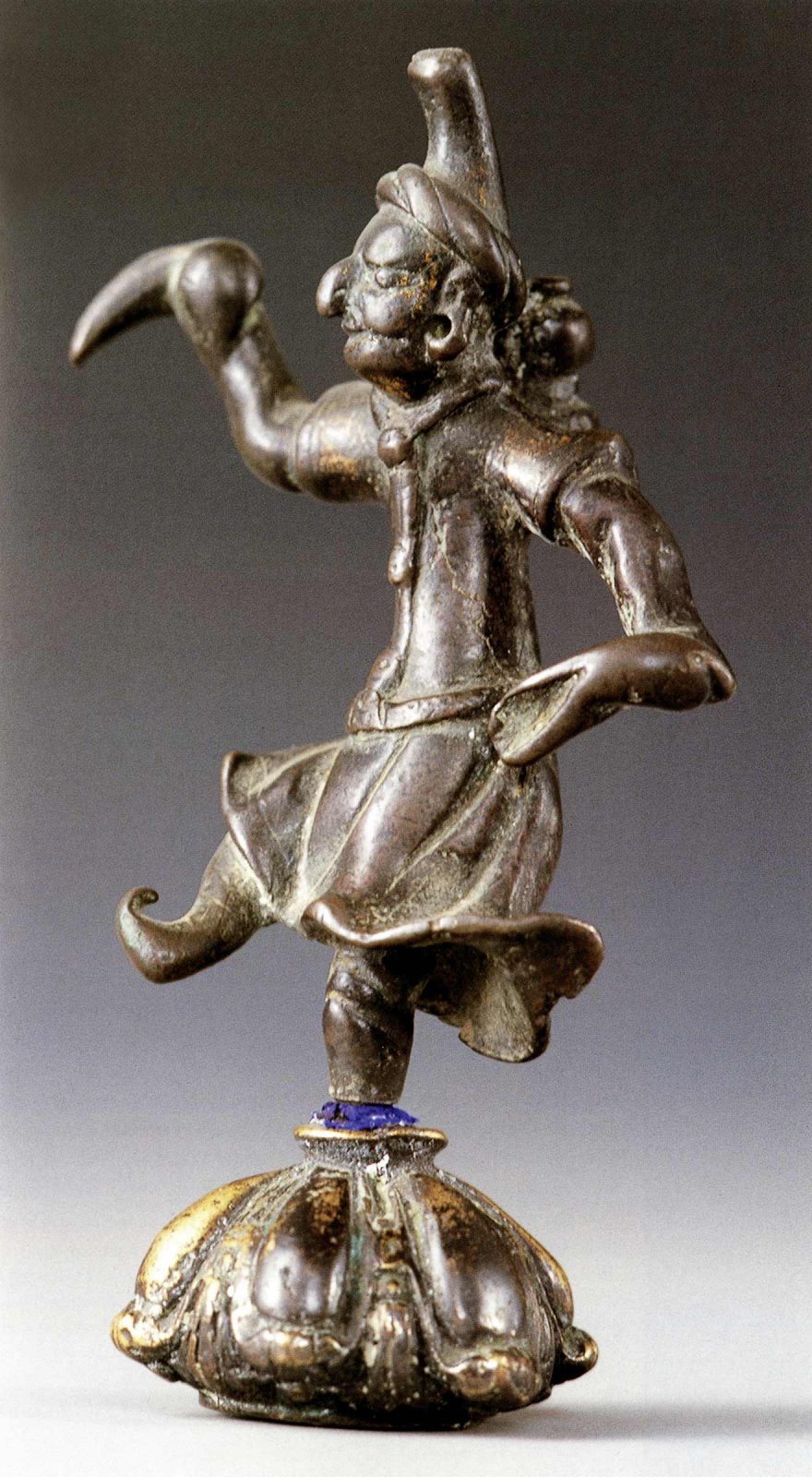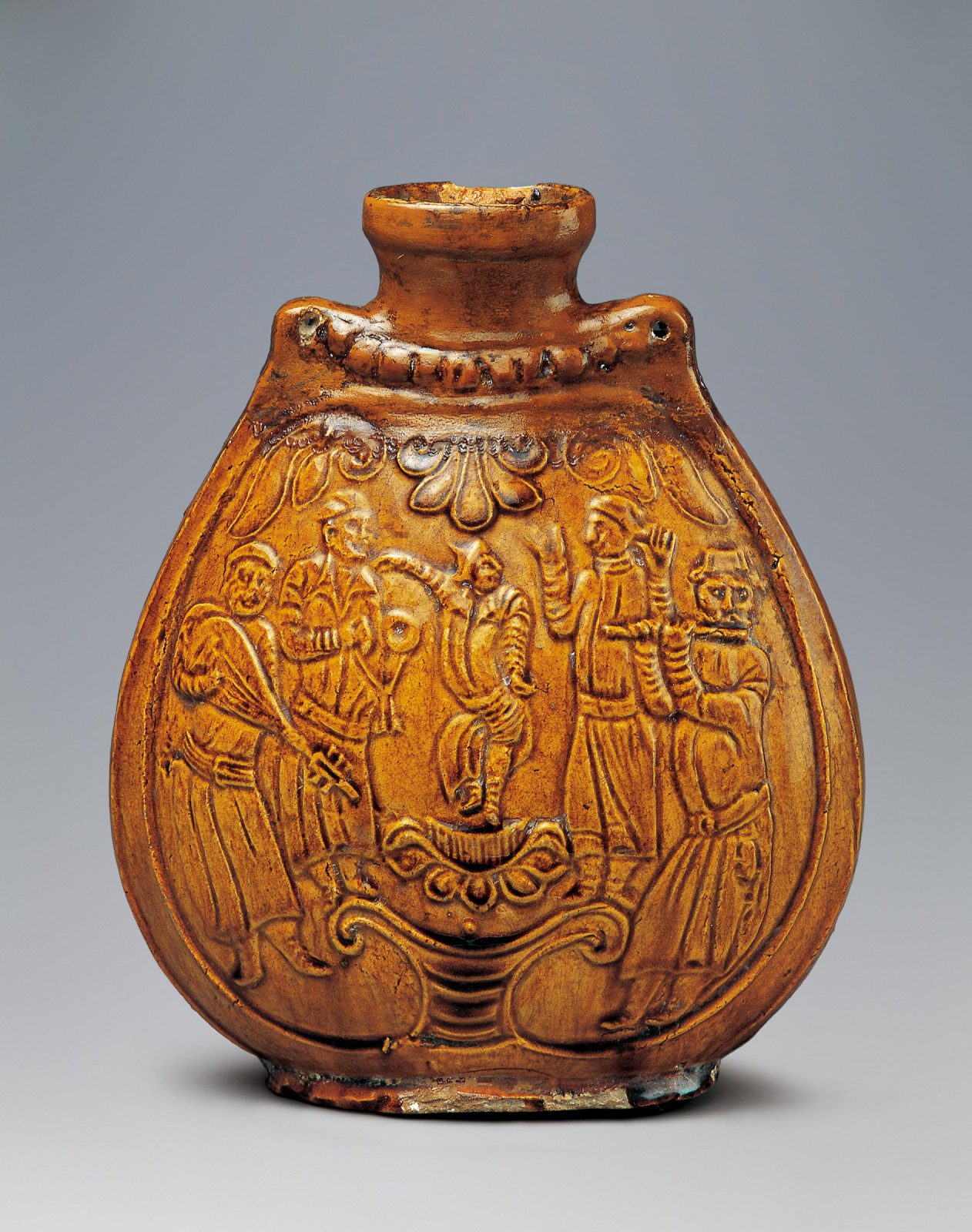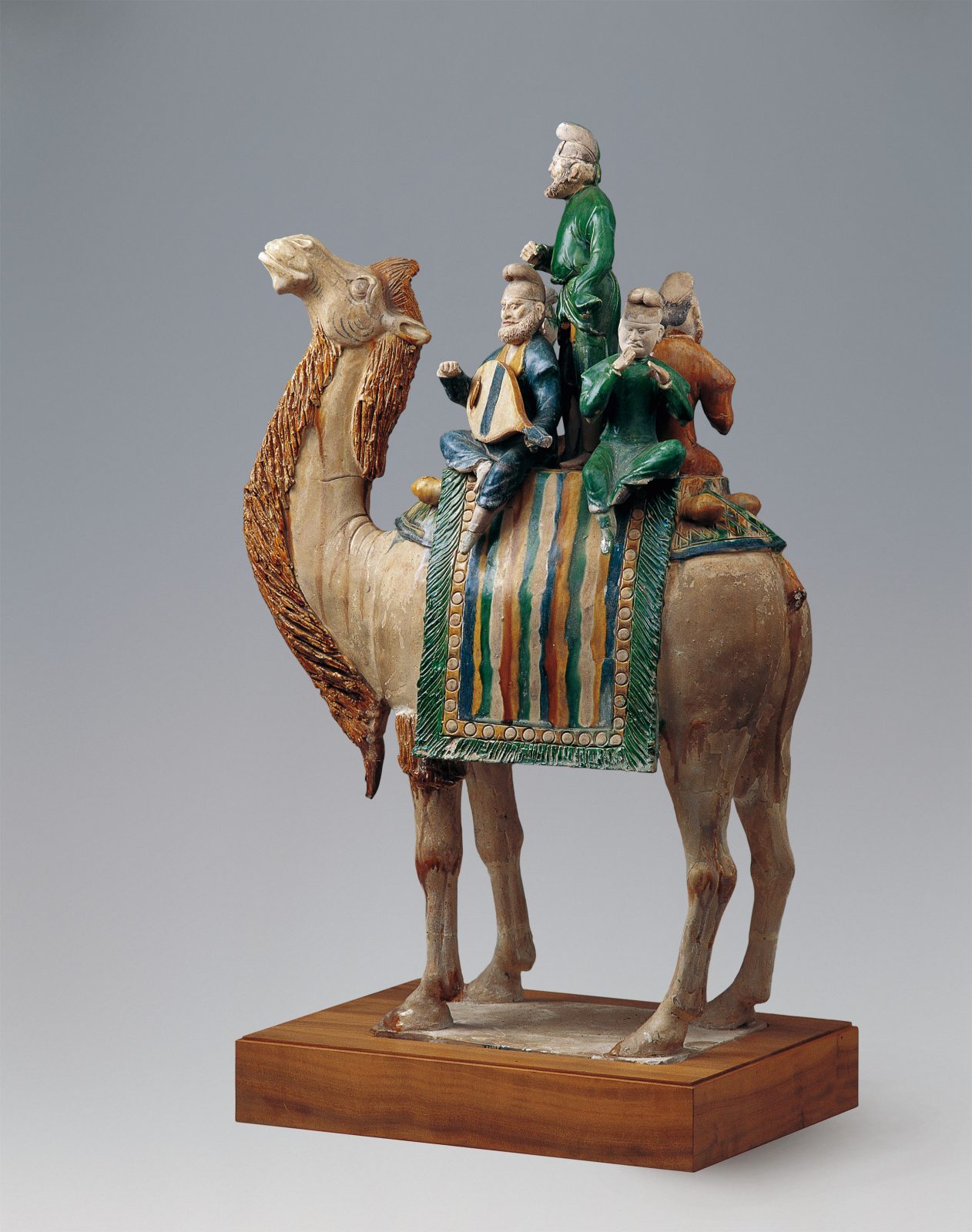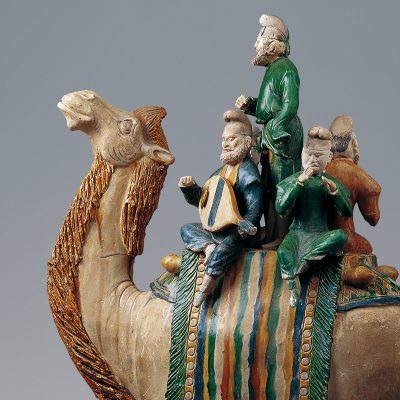
Sogdian Dancer
Tang dynasty (618–907 CE)
Bronze with gilt bronze base; H. 13.7 cm
Found in vicinity of Shandan , Gansu Province, China; acquired between 1945 and 1980
Shandan Municipal Museum, on loan to Gansu Provincial Museum, Lanzhou
After Annette L. Juliano and Judith A. Lerner, Monks and Merchants: Silk Road Treasures from Northwest China, Gansu and Ningxia, 4th–7th Century (New York: Harry N. Abrams and Asia Society Museum, 2001), 255, no. 82
The Iranian from Tashkent appears young.
He dances to the music holding the wine goblet, as rapid as a bird.
He wears a cloth cap of foreign make, empty and pointed at the top,
His Iranian robe of fine felt has tight sleeves.—Liu Yanshi (d. 812)
This unrefined yet lively sculpture captures the defining motion of the famous dance known as the “Sogdian Whirl,” with the dancer’s right leg extending as he twirls. He dances on a lotus-bud base, which is not original but a replacement for the small, round carpet on which many Sogdian dances were performed. Similar lotus-shaped supports, however, appear on the bianhu 扁壺 ceramic flasks of the period; Fig. 1.
Considered the best among Sogdian dancers were those from Chach (present-day Tashkent) , identified by the Tang poet Liu Yanshi as “Iranian.” Such dancers, young boys and girls, traveled with other entertainers in the caravans of the Silk Roads; Fig. 2. Some were sent as “gifts” to the Chinese court or as slaves from Central Asian rulers and impresarios. Others came as itinerant free agents, entertaining both Chinese and foreigners living in China and in communities along the route.
Fig. 2 China, Tang dynasty (618–907 CE) Glazed earthenware, H. 58.4 cm Excavated in 1957 from tomb, dated to 723 CE, of Xianyu Tinghui, general of Yunhui, in western suburbs of Chang’an (Xi’an) National Museum of China, Beijing View object page
Photograph © National Museum of China.
Chinese texts describe the Sogdians as performing several kinds of dances, either “pliant” or “vigorous.” The latter, not surprisingly, were the most popular. Their names give us some idea of their vigor: huteng wu 胡騰舞 [“foreign/barbarian leaping dance”] and huxuan wu 胡旋舞 [“foreign/barbarian whirling dance”]. The latter, also known as the “Sogdian Whirl,” is most often depicted by the Chinese themselves but is featured in entertainment scenes in the funerary art of Sogdians in China. The Tang emperor Xuanzong (685–762) was said to be particularly fond of this dance. To his delight, both his favorite concubine, the Lady Yang, and the Sogdian-Turkic general An Lushan (703–757) learned to perform it, despite the latter reportedly weighing more than 400 pounds.
Even generations after An Lushan’s devastating rebellion of 750, when being of Sogdian descent and living in China could create difficulties, the “dancing Sogdian” remained a popular stock exotic figure. Typically overweight and happily drunk, he is no doubt a reference to the Sogdians’ association with grape wine, which they had introduced into China almost a millennium earlier.
by Judith A. Lerner
Ishida Mikinosuke, “Études sino-iraniennes, I. Apropos du Hou-siuan-wou,” Memoirs of the Research Department of the Toyo Bunko 6 (Tokyo: The Oriental Library, 1932): 61–76, cited in Edward H. Schafer, The Golden Peaches of Samarkand: A Study of T’ang Exotics (Berkeley, Los Angeles, and London: University of California Press), 293, n. 141.
Judith A. Lerner, “82. Dancing Central Asian,” in Annette L. Juliano and Judith A. Lerner, eds. Monks and Merchants: Silk Road Treasures from Northwest China, Gansu and Ningxia, 4th–7th Century (New York: Asia Society and Harry N. Abrams, Inc., 2001), 254–55.
Zhang Qingjie, “Hutengwu and Huxuanwu Sogdian Dances in the Northern, Sui and Tang Dynasties,” in Étienne de la Vaissière and Éric Trombert, eds., Les Sogdiens en Chine, Études Thématiques 17 (Paris: École française d’Extrême-Orient, 2005), 93–106. Other dances enjoyed by the Chinese were erotic, such as the “Dance of Chach,” in which girls twirled amid and atop rolling balls and concluded their performance by opening their clothes to expose their naked shoulders. Still others were quite lewd. “Sprinkling Cold Water on the Barbarian” involved nude performers splashing around in mud and water. (It was banned in 713.) See Peter B. Golden, Central Asia in World History, in The New Oxford World History (Oxford and New York: Oxford University Press, 2011), 41–42.
Edward H. Schafer, The Golden Peaches of Samarkand: A Study of T’ang Exotics (Berkeley, London, and New York: University of California Press, 1985), 56.




